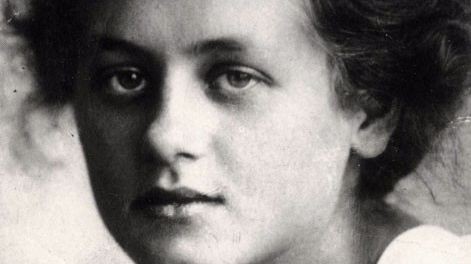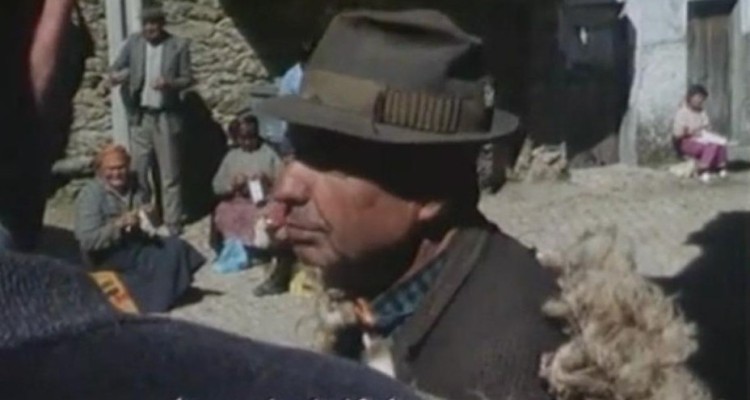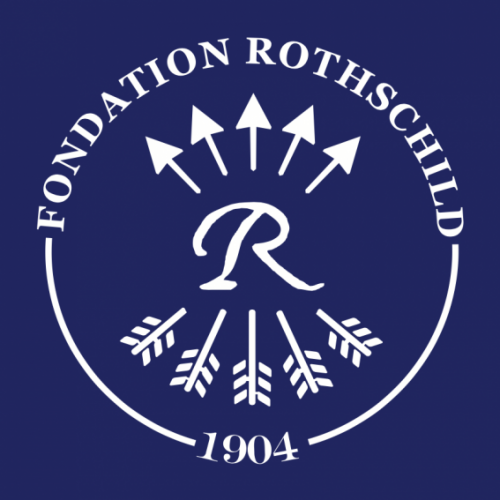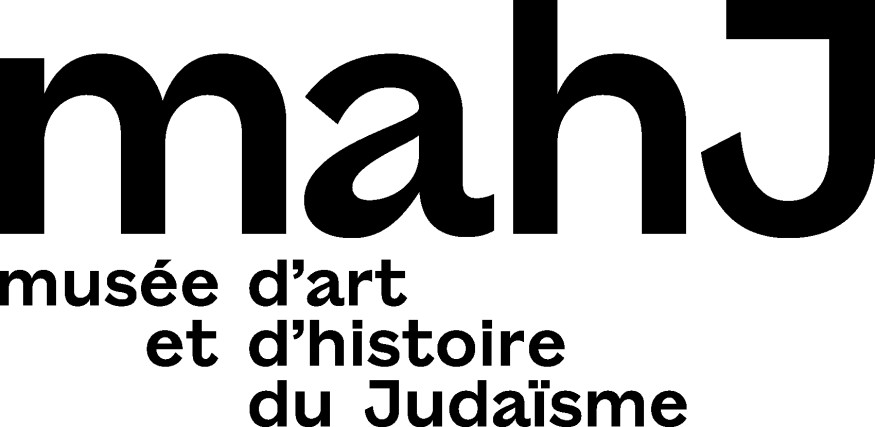About Benjamin Balint’s Kafka’s Last Trial: The Case of a Literary Legacy (W.W. Norton, 2018)
The story is well known: Kafka asked his friend Max Brod to destroy his manuscripts. Not only did Max Brod not do so, but he became the guardian of the writer’s memory, his biographer and publisher, the owner of most of his manuscripts – which he took to Israel. Who owns all these archives today? In his book-investigation, Benjamin Balint followed the events surrounding Kafka’s manuscripts, from the political and literary quarrels to the judicial outcome. Philippe Zard returns for K. to the story of a misheritage.
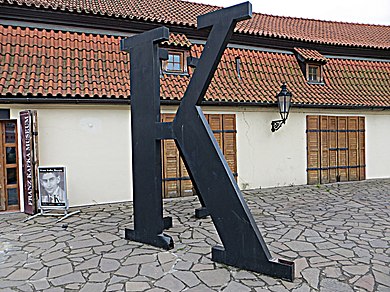
We need to invent a word. Let’s invent it: Misinherit.
Misinherit (verb): to inherit in a wrong way.
Misinherit: to inherit improperly. “Complex Misheritage: the feeling of not really owning what one has inherited, of not being worthy of it, of having stolen it. E.g. The misheritage of Kafka’s manuscripts by Max Brod, Ester Hoffe, Eva Hoffe, the Bodleian Library (Oxford), the Marbach Library, the National Library of Israel…
*
Kafka’s fables are full of these accidents of transmission. In ‘A Crossing’, a playful and restless rewriting of an Easter rhyme, the narrator exposes his embarrassment in front of a hybrid animal, ill-fitting, half-cat, half-lamb, which he takes from ‘his father’s possessions’, and concludes, helpless and perplexed: ‘Perhaps the butcher’s knife would be a deliverance for the animal, but I must deny it: is it not my inheritance? “[1] In “The Family Father’s Concern”, the narrator suffers at the thought that the motley, life-giving, speech-giving entity named Odradek, a “flat, star-shaped spool of thread” that haunts his home, might outlive him[2]. What to do with Odradek? What to do with Franz Kafka’s shapeless mass of bundles and posthumous notes? And, beyond that, who has the right to inherit Kafka? To whom does Kafka belong?
These are the questions that fuel Benjamin Balint’s wonderful essay, Kafka’s Last Trial (2018). The starting point is well known: after Franz Kafka’s funeral (11 June 1924), Max Brod discovered in Kafka’s office ‘a voluminous collection of unpublished notebooks, unfinished drafts and his diary’ (p. 142), as well as two undated notes instructing him to ‘burn without restriction’ all the notebooks, manuscripts and letters that he had left behind. We know what happened: Max Brod took it upon himself to violate these last wishes by publishing the pages that their author had condemned to fire. Because he was convinced that Kafka – inhabited by an artistic ideal that he believed himself incapable of achieving – had always disregarded his own genius; because he had come to believe that Kafka, knowing his friend’s admiration for him, knew that he was entrusting this destructive task to the person least willing to carry it out…
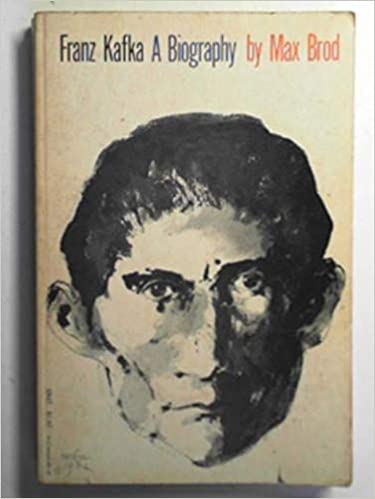
Balint could have been content to unravel the thread of this problematic legacy linearly: Brod’s publishing work in the 1920s and 1930s, the 1935 hiatus (when Brod’s and Kafka’s books, edited by Salman Schocken, were blacklisted by the Third Reich), Max Brod’s hasty departure from Czechoslovakia, fleeing the advancing Nazi troops with his suitcase full of his friend’s manuscripts (1939), the gift of his manuscripts in 1945 to his secretary and mistress Ester Hoffe, the bequest by Ester Hoffe of these same manuscripts to her two daughters, Ruth and Eva, in 1970… The book reconstructs the episodes of a long legal battle which, from 1973 to 2016, would lead to the dispossession of Eva Hoffe in favour of the Israeli National Library: Ester Hoffe’s first victory, when her right to ownership of the manuscripts was confirmed by the Israeli courts (1974), the resumption of legal proceedings after Ester Hoffe’s death, when the State challenged the legality of her last will and testament (2007), and finally Eva Hoffe’s final defeat in 2012, confirmed by the Supreme Court in 2016…
Benjamin Balint’s essay, however, goes beyond the judicial chronicle. The manuscript affair is first rearranged in an ingenious dramaturgy. The original scene in June 1924 is only reported in the middle of the book: On either side of this line, the reader is transported from one time and country to another, each chapter being placed under a unity of setting – from the Supreme Court in Jerusalem to Kafka’s house in Prague, from an antiquarian bookshop in Munich to the Ministry of Propaganda in Berlin, from the Czech-Polish border to a London hall, via Max Brod’s flat in Tel Aviv… – and time (from 1902 to 2018), the anchor points of a narrative that then unfolds freely, made up of field investigations, interviews with the main actors and witnesses of the “affair”, academics and writers, all interspersed with personal reflections on the work of Kafka. It reads like a literary-political “detective story” against the backdrop of a legal dispute and a war of memories.
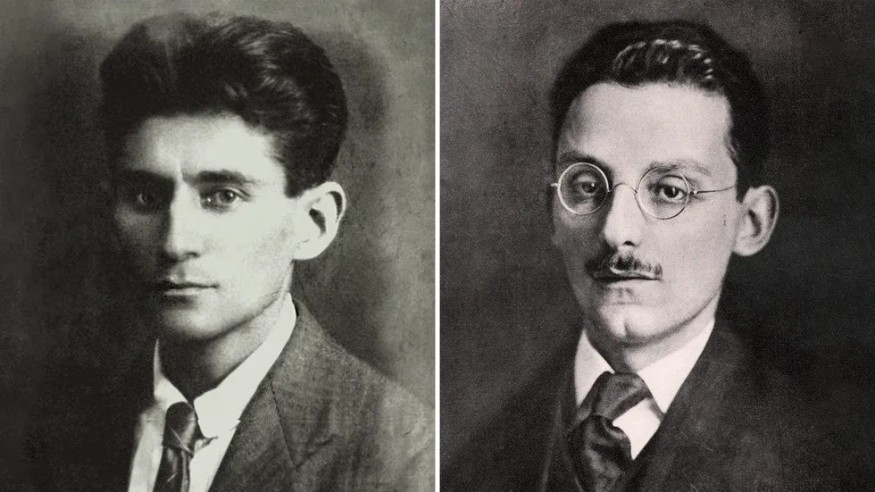
There are several ways of pulling the threads of this book together. One of them is to read in it the intertwining of individual destinies and collective logics. The first chapter, which takes place in the Israeli Supreme Court, features three actors: the National Library of Israel, the German Literary Archives in Marbach – two state “powers” – and eighty-two year old Eva Hoffe, reduced to her meagre strength in a case she could no longer understand or control. A struggle of one pot of clay against two pots of iron. Kafka’s work had gone from being a confidential adventure during the writer’s lifetime to a symbolic issue for two peoples, a cultural battlefield where hermeneutics rubbed shoulders with political calculations and the geographies of the mind.
Max Brod, the Kafka’s friend’ and the Ester Hoffe’s lover
That is, in the first instance, the erratic thread of private transmission. Trial for trial, Balint’s book could first be presented as an “appeal judgment” for Max Brod: neither apology nor rehabilitation, but an exercise of fairness towards a complex personality, an unequal polygraph but a man of culture often mistreated by history, by his contemporaries, and even more so by posterity. Brod is nothing like the simpleton in whose guise he has too often been described, or even despised. He is, in fact, the main character in this incredible tale. Balint brings to life the episodes of a literary friendship that borders on oblation, not without a diversion into vaudeville. He reconstructs the meeting between the two young men at Charles University in Prague on 23 October 1902 (during a lecture by Max Brod on Schopenhauer) and recalls Brod’s prescience of the genius to come. His dedication begins while Kafka is still alive, when he encourages him to write, literally wrests publications from him, and uses his own fame to recommend him to publishers: this is the Saint John the Baptist side of Max Brod, announcing that Kafka’s light should grow when his own would diminish.
Then comes the story of the day in June 1924 when Hermann Kafka, after having granted Max Brod the right to publish his son’s works posthumously, gives him access to the manuscripts and the famous ‘last will’. This was Brod’s first betrayal: not content with not destroying the manuscripts, he set about publishing them. But he betrays Kafka like Amos Oz’s Judas betrays his Master: so that he may reveal himself.
Another story begins, in which it becomes difficult to distinguish between fidelity and betrayal: the one that makes Brod the “creator of Kafka”, the man who, by publishing texts that the author had wanted to destroy, takes them over to impose his personal vision, founds something like a hagiography, intervenes without excessive scruples to correct them or impose erroneous editorial choices, and annexes the novels to an interpretation that owes more to theology than to aesthetics. If we were to draw an analogy, we would be dealing here with a portrait of Max Brod as Saint Paul, inventor of Christianity…
If this first part of the story is well known, Brod’s second life is less so: It began on 15 March 1939 when, fleeing the Wehrmacht, the writer crossed the Czech-Polish border with his suitcase full of Kafka’s manuscripts (after having taken the risk (in a fine display of self-sacrifice) of abandoning his own in a trunk in Prague) to reach Palestine, where he continued his apostolate, working on the publication of his friend’s postmortem writings, especially his Diary, in return for a few occasional redactions.
Max Brod, though won over to the Zionist cause by Martin Buber in 1909, had originally planned to emigrate to the United States rather than to Mandatory Palestine. Was it the feeling that he would have been happier there? In any case, the account of the difficult acculturation of this pure product of “Mitteleuropa” to the culture of the yichuv (the Jewish population settled in Palestine before 1948), and then to that of the young State of Israel, is among the most moving pages of the essay. Brod continued to write extensively in Israel, but he lost his audience, struggled to gain recognition – and even the prestigious Bialik Prize, awarded to him in 1948, the very year Israel was founded, was passed over. Assigned to the thankless profession of literary attaché at the Habimah theatre in Tel Aviv, coming from an ancient world, with an imperfect command of Hebrew, he is now, in the eyes of the society in which he lives, only “Kafka’s friend”, his executor and interpreter, who is becoming increasingly controversial…
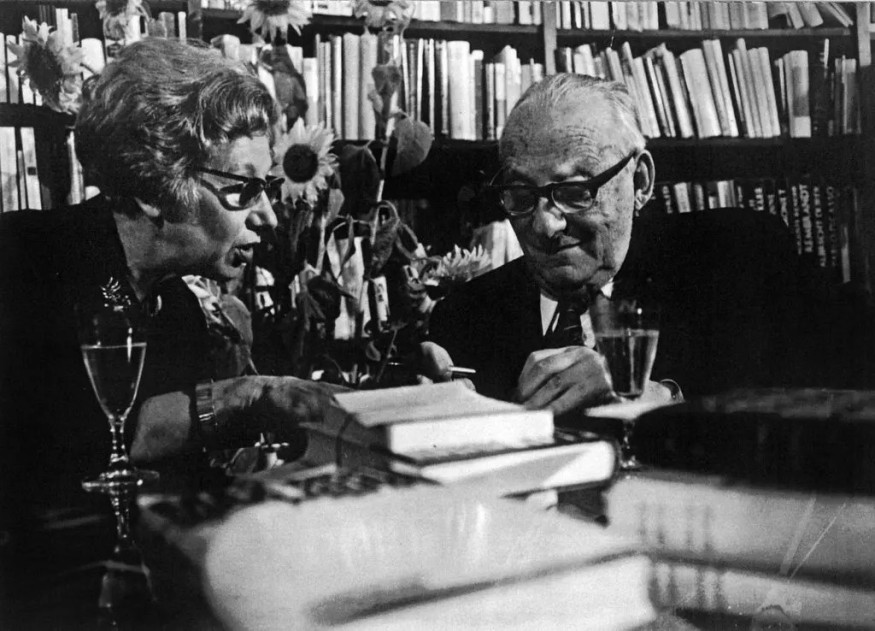
It is in this context of Max Brod’s loneliness and personal crisis (death of his wife in 1942, break-up with his mistress) that Balint inscribes, under a deliberately romantic title (‘Brod’s last love’) the episode Hoffe: Ilse (soon renamed Ester) Reich, a Czech-born Jew, wife of Otto Hoffe, had reached Palestine after a diversion through France in 1940; having become friends with this Czech refugee couple, Brod benefited from Esther’s daily help in putting his manuscripts in order. A new turning point in the posthumous history of Kafka’s works: weakness or gratitude, from 1945 Brod donated the Kafka texts in his possession to the woman who had become his lover (Balint’s text remains delicately discreet on this point…) – a gift confirmed in writing in 1952. Brod’s last betrayal, certainly the most astonishing, the least justifiable of all, and from which the whole of the following will proceed.
Thus, Brod “misinherits” Kafka’s manuscripts; and Ester Hoffe “misinherits” Brod’s manuscripts.
The case of Eva Hoffe
Kafka’s will, Brod would say, was ambiguous. What then can we say about Brod’s own will, which made Ester Hoffe his sole heir and executor, while expressing the wish (in June 1961, seven years before his death) that his literary estate be entrusted to an Israeli library, or failing that to a foreign library, and without formally mentioning Kafka’s manuscripts? In 1970, Ester had already donated the Kafka manuscripts Brod had given her to her daughters, while retaining a right of control over their destination and an interest in their eventual sale. Left to her own devices, confirmed in her rights as owner by an Israeli court decision in 1974, Ester Hoffe undoubtedly crossed the line when she began to sell certain manuscripts, including that of The Trial, at public auction at Sotheby’s in London in 1988 – an episode which Balint describes in detail, recounting the stratagem by which the Marbach Archives won the bid, thus preventing the treasure from falling back into private hands.
However, it was not until the death of Ester Hoffe in 2007 that the judicial denouement began, against the backdrop of a pathetic drama recounted in several episodes scattered throughout the book, between Jerusalem and Ramat-Gan, between the “Family Court” in 2007 and the “Supreme Court” in 2016. The procedure will lead to the opening of Bank Leumi’s safes, the transfer and archiving of the deposited manuscript boxes to the National Library of Israel (pending the transfer, in 2019, of the boxes deposited in Switzerland). It is the story of an expropriation, that of Eva Hoffe (and her sister, who died in 2012), of two old ladies overwhelmed by what is happening to them.
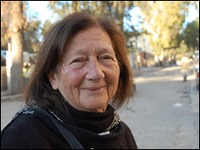
The character of Eva Hoffe, overwhelmed by the legal war waged by the State of Israel and incidentally by Germany, which she interprets as an attempt at spoliation, violence, even rape, arouses Balint’s obvious empathy. And if Israeli judges sometimes play with Kafkaesque mise en abyme, the essayist is not to be outdone when he compares the last heiress to the “country man” in the parable of the Lawkeeper. Like him, “Eva Hoffe remained stranded and bewildered before the gates of the law. There would be no redemptive truth for her. She did not understand the law or the intricacies of legal reasoning, but she understood the sentence. It was the trial itself that was her legacy. Paradoxically, she had inherited her disinheritance, inherited the impossibility of fulfilling her mother’s last wishes. All she owned was her dispossession. Single and childless, Eva Hoffe died defeated and desperate, and the agents of the National Library who, after her death, entered her flat on Spinoza Street in Tel Aviv discovered, in an insalubrious hovel, some sixty boxes where thousands of pages (many by Max Brod, only a few by Kafka) were abandoned to the dust, cats and cockroaches.
It is with good reason that Balint opposes, at the end of his book, to this series of “failures” of transmission, to this uneven chain of problematic inheritances, the ideal of transmission fixed by the Talmudic tradition and whose formula inaugurates the compilation of the Maxims of the Fathers: “Moses received the Torah at Sinai and transmitted it to Joshua. Joshua passed it on to the elders, the elders to the prophets, the prophets to the men of the Great Assembly […]” In the light of this model, the chain that runs from Kafka to Brod, from Brod to Ester Hoffe and from the latter to his daughters is made up of nothing but hazards, irregularities, unspoken words, equivocations and misunderstandings. The reason for this is that the donor’s will is not clear, that it betrays hesitations or scruples, that it is expressed with reservations, to the point where it can be interpreted and misused. Had Brod given full ownership of his manuscripts to Ester Hoffe, or had he simply granted her the right to use them? Was his instruction to hand over the manuscripts to cultural institutions binding? Did Ester Hoffe have the right to donate and sell the manuscripts?
The complexity of the legal situation was compounded by the nature of the transfer itself, for example, whether it was an ante mortem gift, posthumous remains or a formal succession. Kafka had given Max Brod the manuscript of The Trial as early as 1921, and Brod was naturally the owner of the letters Kafka had sent him; this possession was of a different nature from that of the manuscripts that Kafka left to his responsibility after his death, which were to be burnt – and, in the already problematic event that they were not, were to revert to Kafka’s legal heirs, in this case his niece Marianna Steiner (née Pollak) and his son (Michaël), who had been living in London since 1939. This distinction between what was rightfully his and what he was only the occasional administrator of was fully recognised by Max Brod, who, moreover, was never challenged on his initiatives by Kafka’s true heirs – who, on the other hand, had a lot to say about the liberties taken by the publisher Salman Schoken, who had transferred certain manuscripts to Switzerland without informing anyone, and about the prolonged silence of the State of Israel, which had waited until 2010 to request them… The rest is the same: Brod donated his manuscripts to Ester Hoffe and entrusted her with his estate.
Determining the rightful owner, what one is entitled to give away, what one is simply passing on without deciding on its legal status, is a challenge, each new link in the chain being more fragile and less legitimate than the previous one. The case of Eva Hoffe was undoubtedly humanly heartbreaking and legally scabrous, but it seemed almost inevitable that, having reached such a point of fragility, private law would give way to the steamroller of states and patrimonial policies.
This is the second aspect of Balint’s book, the one that gives the French edition a much more politically oriented and somewhat reductive subtitle (Le sionisme et l’héritage de la diaspora) than the original, much broader version (The Case of a Literary Legacy). The essayist’s skill lies in the way he intertwines a thorny moral and legal dispute with a political and literary intrigue whose issue is not so much ownership as belonging.
Who does Kafka belong to?
Who gets to decide who owns a writer, let alone a literary work? Isn’t fighting to ‘possess the artistic legacy of the least possessive man ever’ (Joseph Brodsky, quoted on p. 253) already indecent? But what can we say, Balint seems to add, when it comes to claiming as one’s own a writer who has always recanted against any identity or community assignment? And to quote, after so many others, the inevitable extract from Kafka’s Diary: “What do I have in common with the Jews? I hardly have anything in common with myself. (8 January 1914).

The pages Balint devotes to questions of identity are admittedly rather patchy, somewhat impressionistic, and can hardly be compared with the works that have long been authoritative on the question; but one will nonetheless find, in scattered order, the main elements of the debate: the portrait of the young Kafka who rebelled against any identification, his cult of the great German and French authors (Goethe, Kleist, Flaubert… ), his enthusiasm for Yiddish theatre, his Hebrew lessons and his late interest (detached from any observance) in Judaism, his fluctuating judgements and his ambivalence towards Zionism (‘I admire Zionism and it disgusts me’) – which Balint rightly likens to his relationship with women and sexuality – which did not prevent him from cherishing, during his last year of life, a platonic dream of emigrating to Palestine.
Similarly, Balint gives a suggestive overview of the academic quarrels that have long pitted the proponents of a “universalist” reading against the supporters of “Jewish” readings (for there are as many as there are interpreters) – without, however, showing enough of the artificiality and sterility of such an opposition, even today: As if the Jewish readings of Kafka were all to reduce him to some narrow ghetto, or as if Kafka’s universal scope could only be gained at the price of a voluntary blindness to the cultural determinations of his inspiration. What remains is the generally accurate diagnosis of a work and a life that thwart attempts at annexation – hermeneutical and above all political – more than many others.
So what is to be done with the corpus of unfinished manuscripts? Over the puny shoulders of Max Brod, Ester and Eva Hoffe, a half-century of tragic history casts its shadow. A story, incidentally, that is dramatically simplified since, in fact, for different reasons, the only two states of which Kafka ever held the nationality (Austria and the Czech Republic) were left out of the inheritance dispute to make room for two others, Germany and Israel. Since the expropriation of Eva Hoffe was inevitable, who should own Kafka?
Germany versus Israel
From a coldly rational point of view, the transfer of these manuscripts to the Marbach Archives, which already possessed the letters to Milena and another Kafka manuscript (“The Giant Mole”), seemed perfectly plausible. The prestigious institution had all the guarantees of conservation, archiving and philology. Founded in 1955 in Schiller’s birthplace, it responded to the wish of a progressive intelligentsia (the Group 47: Grass, Böll, Walser, etc.) to overcome the political curse of the Nazi past through cultural renewal. The project of repatriating Kafka to the German ‘national treasure’ was, in this perspective, a form of expiation, a dream of reparation. Kafka had become, on a par with Dante, Shakespeare or Goethe, a man of the age, who was also said to have had a premonition of a barbarism that only his premature death had allowed him to escape. Everything seemed to favour this choice and give it meaning.
Certainly, external objections and internal inhibitions weakened these claims and finally defeated them. Certain objective elements weighed in: the manuscripts had been entrusted to Brod, who had made his life in Israel and expressed his preference for a cultural institution in that country; Kafka was certainly not Israeli, nor even precisely a Zionist (whatever his friend wanted to make of it), but neither was he German, if not for a language that he had come to regard as ‘foreign property’. And if it is true that German academic research on Kafka has been more fruitful than Israeli research, it will have been permanently hampered by the Jewish dimension of the work. Above all, since Kafka’s world had been completely devastated by Nazi Germany and his family decimated, it might have seemed inappropriate to claim a right of ownership over a writer who, had he lived another seventeen years, would have ended up in a crematorium. This was the essence of the plea of the lawyer of the National Library of Israel: since the trial was taking place in Israel, what could be said to such an argument?
The shadow of genocide ‘hung over the court’, says the executor of Ester Hoffe’s estate: the enormity of the political liabilities was such that, says Balint, the German side did not really try to follow through with its claims: It was a matter of not giving in to the politically untenable suspicion of an attempt to despoil Jewish property; it was better to seek a compromise, even if, Balint suggests, by adopting a somewhat artificial posture of pure scientific disinterestedness in order to leave the Israelis with the ungrateful role of blinkered nationalists. …
Was the case clearer on the side of the Jewish state? Not really, and Balint’s essay also allows us to enter the meanders of an Israeli culture that is not far from a paradox – and a mutation – in its relationship with the diasporic heritage. If Balint recalls the embarrassment that Kafka’s Judaism may have caused, he exposes even more the indifference that Israeli society had for a long time for Kafka’s work – with a few exceptions, including that of Gershom Scholem who, from his beginnings at the Hebrew University, had made the author of the Trial a pillar of Jewish literature. The signs are numerous: no Kafka street in Israel, writes Balint (he is wrong, however, but his error is excusable, since one now exists in the northern districts of Tel Aviv) nor any edition of the complete works like those that exist in the United States, Germany or France.
There are many reasons for this – and the very late appearance (1973) of German literature departments in Israeli universities should not be overlooked – but the most obvious one is the very nature of this work and this life: the model of the Jew represented by Kafka was the very one from which the reborn Hebrew culture intended to emancipate itself. Political vulnerability, hypochondria, out-of-touch intellectuality, a vague sense of identity, a feeling of powerlessness: everything in the personality of the valetudinarian genius from Prague seemed incompatible with the model of the “sabra”, the vigorous pioneer that Zionism intended to promote, and the writer’s irreducible solitude was decidedly insoluble in the collective adventure of the young Hebrew state. What wonder that works of fiction (Balint mentions Forest Dark by Nicole Krauss) play with the counterfactual hypothesis of a “Kafka in Palestine” (the title of a controversial short story by Alain Brossat, which Balint does not quote)?
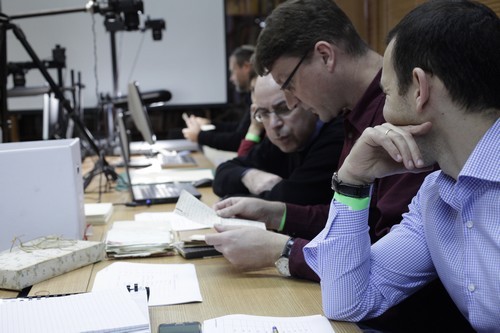
The other side of the Zionist project played its part in the outcome of this strange Kafka affair: For, for the founders of Israel, the utopia of the new man was married, almost natively, with the ambition of a memorial and patrimonial recollection by virtue of which the “old new country” (Altneuland) dreamed of by Theodor Herzl would establish itself as the heir to the totality of Jewish history, arrogating to itself the responsibility of safeguarding the diasporic past, restoring the continuity of a dispersed people. In this sense, the dispute over Kafka’s heritage should be understood for what it really was: a low-intensity “cultural war”, the stakes of which would be nothing less, in the words of the academic Nurit Pagi (a specialist in Max Brod), than the affirmation of Israel’s political legitimacy, of its link with European Jewish history and of a wager on its durability.
One can certainly think, like Lali Tsipi Michaeli, that “Kafka’s manuscripts should have been sent to the moon”; one can certainly find the expropriation operation of which Eva Hoffe was the victim, the opportunistic recuperation and the capture of the inheritance to which the State of Israel has belatedly devoted itself, inglorious; it can also be considered, from an academic point of view, that the Bodleian Library[3] (which holds, among other things, two of Kafka’s three novel manuscripts) or the Marbach Archive would have had superior advantages (although the digitisation of the archive, Balint reminds us, has made this debate almost idle). But who could peremptorily decree that the National Library in Jerusalem was the worst possible home for the work of a writer who said of himself: “I have been wandering out of Canaan for forty years”?
Philippe Zard
Philippe Zard is Professor of Comparative Literature at the University of Paris-Nanterre. He has recently published “De Shylock à Cinoc. Essai sur les judaïsmes apocryphes” (Classique Garnier, 2018) and a critical edition (prefaces and notes) of Albert Cohen’s novel tetralogy: “Solal et les Solal”, coll. Quarto, Gallimard, 2018.

